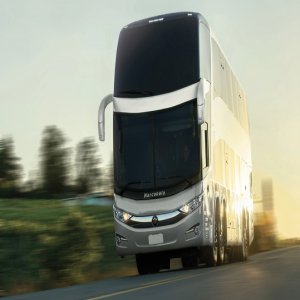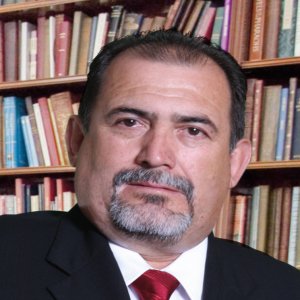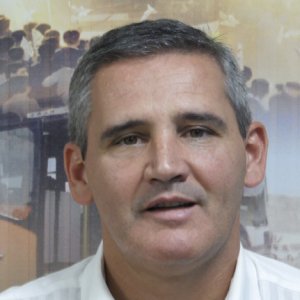Premium Scandinavian OEM Undergoes Intriguing Brand Rebirth

STORY INLINE POST
Q: What are Volvo’s strategies to reach its long-term goal of selling 10,000 vehicles a year in the country?
A: From a global point of view, Volvo has broken its own sales record for two consecutive years, reaching a volume of approximately 435,000 units. The global sales target for 2015 is 500,000 units. In Mexico, we sold 1,055 units in 2014, and we are forecasting 1,700 vehicles to be sold by the end of 2015. The main reason for this growth was the launch of the new Volvo XC90, as well as the development of a more robust dealer network. Unfortunately, we lost two of our most important local distributors in 2014, so we had to develop others to replace them. Nevertheless, we expect to recover from this loss to develop a more stable platform for our future operations. The year 2015 marks a turning point for Volvo and we are working on a complete renewal of all our lines.
Q: Which models will be subject to Volvo’s plans for renewal, and what kind of changes will you be making to them?
A: Volvo has always been considered an aspirational brand, but we are a premium manufacturer that wants to be the first option of every customer in this segment. We will start with the XC90, and then we will move on to the entire 90 cluster. Afterwards, we will start with the 60 and the 40 cluster, covering all the models in a period of approximately 4 years. The 90 cluster will be our most luxurious line, while our 60 products will be more sporty and approachable, directed toward customers who want to focus on the performance of the vehicle and the enjoyment of driving. The 40 line on the other hand, is for young executives in the process of developing and growing in an organization. It is a more compact vehicle that may accommodate a young married couple.
Q: What does the new Volvo XC90 symbolize for Volvo in Mexico?
A: The XC90 represents the first step in the rebirth of the brand, as the new statement of luxury to the customers. This model happens to be an iconic vehicle first launched 14 years ago that has not changed dramatically. Despite this, customers still like it because of its flexibility, maneuverability, and safety. However, the new XC90 is a completely new vehicle in terms of design and engineering, with a lot of new features not currently offered by the competition. Its interiors are totally renovated, with slimmer and more ergonomic seats, as well as a massage option available. Additionally, this model is the first vehicle to have 360-degree sensors to detect surrounding objects. There is also a new tightening system for the seatbelts that activates before an accident, preventing any motion during the crash. Furthermore, the XC90 has an integrated tablet to have complete connectivity in the vehicle, providing basic autonomous driving features so the car can take care of the journey. In the future, our objective is to introduce full autonomous driving in all our models. This car is also Volvo’s first hybrid model in Mexico. The vehicle will function with both gas and electricity, and it will have a 400hp performance.
Q: How can you be sure that the XC90 will prove to be successful in this challenging market?
A: In 2014, we did a presale of a limited edition of 1,927 XC90 units available globally, 21 of which were sold in Mexico, greatly exceeding our expectations of the market. This was the first transaction we ever made using digital commerce, and we had an extremely positive response given that the 1,927 units sold out in just 48 hours. It was a record for this kind of transaction, especially for a vehicle that customers had not actually seen. Now, we are targeting a volume of 250 XC90’s by the end of 2015, and we are expecting to sell around 600 units annually. The limited edition version was delivered in July 2015 at a price of MX$1.35 million (US$90,000), and we will launch four other versions ranging from MX$850,000 (US$57,000) to MX$1.2 million (US$80,000), and finally the hybrid model that is going to be offered at MX$1.3 million (US$87,000). We are estimating all these prices based on the current economic conditions of the country.
Q: What strategies is Volvo developing to strengthen customer loyalty?
A: During 2014, Volvo performed a customer trend analysis, where we plotted traditional, adventurous, and contemporary customers segments against low, medium, and high income levels. We then located every brand available in the market, based on how customers perceived it, and identified a special segment of customers that has a different definition of luxury, who were true advocates of technology and contemporary design. This is one of the most difficult segments to understand, particulalry as these clients want to keep up to date with every innovation. Volvo wants to target this segment, which means that our challenge is to find new ways to retain these people. There is still a transition to be made between segments, but we are working on moving toward the new generations.
Q: How have you developed your dealership network in the country and which role does the Volvo Retail Experience play in this process?
A: We are going through an image renovation process with our Volvo Retail Experience (VRE). Our dealerships are now glass houses with frosted windows, and frames for displaying every vehicle. We wanted to create an impression of coldness from the outside, following the Swedish interpretation of luxury, but also make things really warm, homey, and comfortable on the inside. Our new dealerships were already developed with this concept in mind and 30% of our network is currently going through this renovation. We expect to reach 45% by the end of 2015, and complete the transformation by the end of 2017.
Q: How has Volvo grown in terms of financing in Mexico, and what new services are you including in your portfolio?
A: We are working with our partner BNP Paribas in a very positive way. We already launched the Volvo Car Financial Services program, and we started Volvo Car Insurance in 2014 to offer premium services for all our vehicles. Right now, we have reached 35% of our clients with BNP Paribas. In terms of leasing, we have had many debates to determine the potential size of the market Mexico is still developing in this area, and our plan is to launch a leasing product in about a year. There is sound potential for growth, but we still have to work on all the different aspects that are involved with leasing. The first important factor is culture and the identification of the right customer for a leasing product. Then, we must consider how to make this financially attractive for the customer, especially considering the possible fiscal benefits. Finally, we have to determine how we are going to recycle the vehicle in the market after its leasing contract, and how we are going to get the customer to engage in the next product.
Q: How is Volvo working to continuously improve the safety standards of its vehicles?
A: Safety has become a standard in the automotive industry, and is now just as important as quality; it is part of our DNA, and it will continue to be one of our main objectives. We are incorporating new technologies like radar sensors, seating solutions, and pedestrian airbags, and we are also working on new materials to develop a more rigid body to protect the customer.
Mexico has not always been a safety-oriented market. This is a matter of education, and the industry has had to change to show customers the real value of these systems. For that reason, we have developed various programs in universities to educate young people about the responsibility of driving. Our Road Show program is a platform for presenting real stories about drivers that survived accidents. This is not an advertisement show for Volvo; it is a social program we started in order to improve the driving culture of the Mexican population.
Q: Which role does Volvo aspire to play in the premium market?
A: We have a clear goal to reach 800,000 units by 2020, and our target is to compete by offering unique experiences through our dealers, our vehicles, and our values. Furthermore, we have a goal to eliminate all deaths or serious accidents related to our vehicles by 2020. We are a relatively small company, and we do not have the same number of products as some of our competitors. However, we do not want to be the largest premium company in the world, but we want to be the smartest one, offering the best possible service levels and our unique Scandinavian design.























